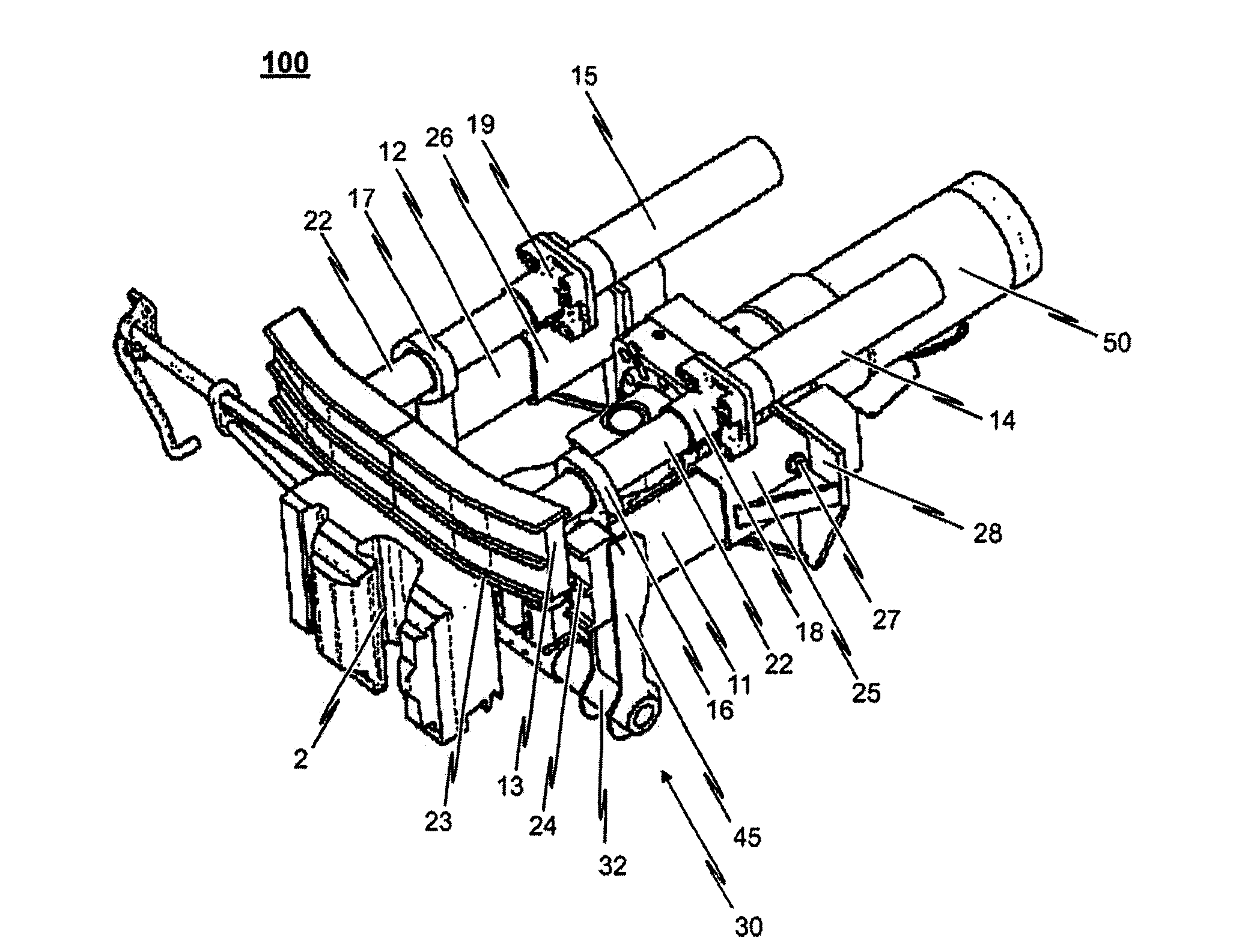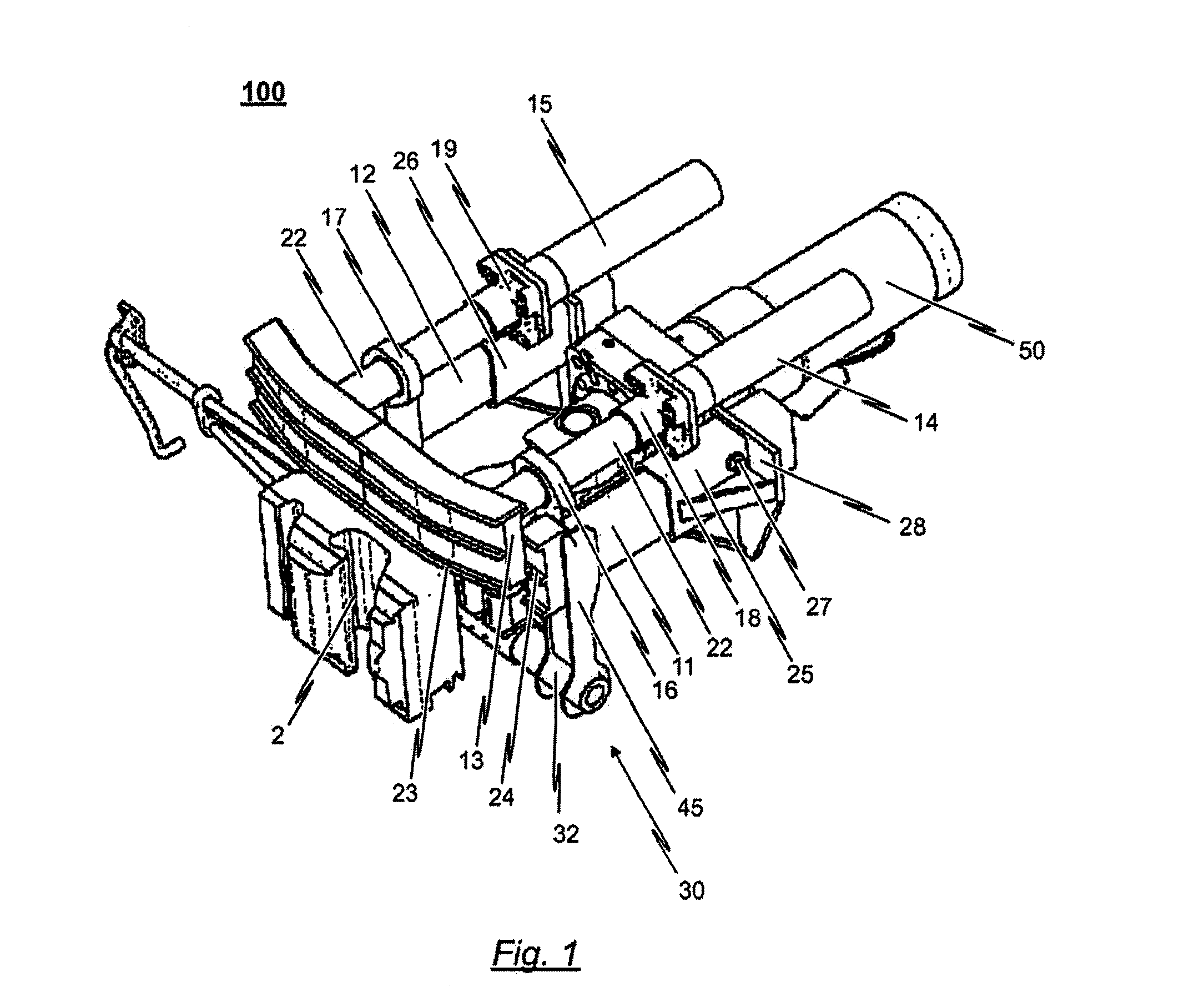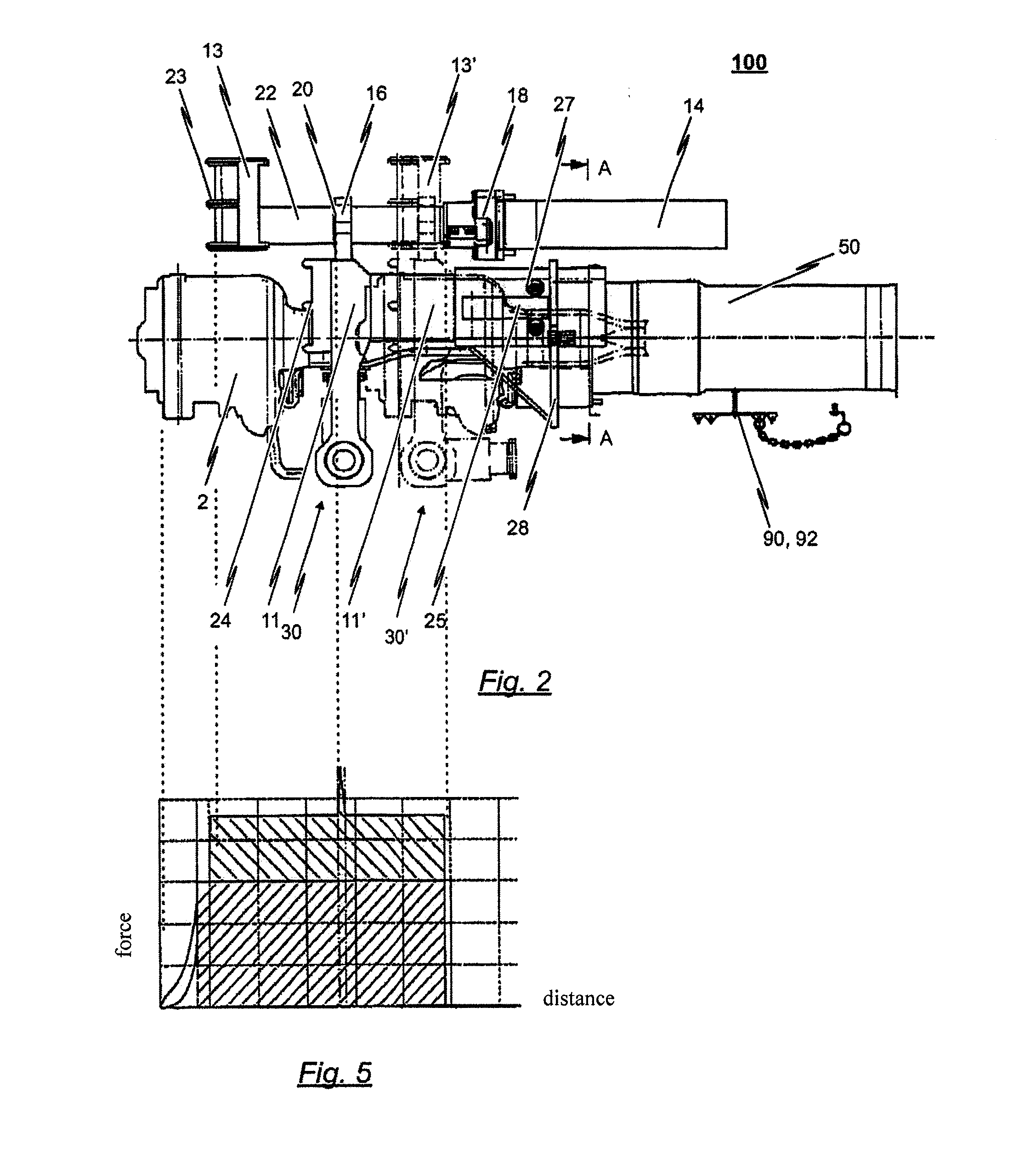Coupling arrangement for the front of a tracked vehicle
a track vehicle and front-mounted technology, applied in the direction of railway coupling accessories, draw-gear, buffers, etc., can solve the problems of potential damage, interfering with adjacent freight car bodies, and insufficient absorbing devices to absorb the overall accumulated energy, so as to prevent the effect of overriding motion
- Summary
- Abstract
- Description
- Claims
- Application Information
AI Technical Summary
Benefits of technology
Problems solved by technology
Method used
Image
Examples
Embodiment Construction
[0060]Various embodiments now will be described more fully hereinafter with reference to the accompanying drawings, in which some, but not all embodiments of the inventions are shown. Indeed, these inventions may be embodied in many different forms and should not be construed as limited to the embodiments set forth herein; rather, these embodiments are provided so that this disclosure will satisfy applicable legal requirements. Like numbers refer to like elements throughout.
[0061]Below is a description of the design and functionality of an exemplary embodiment of the coupling arrangement 100 according to the invention, with reference to the illustrations in FIGS. 1 to 5.
[0062]As is best visible by the representation in FIG. 3, the purely exemplary illustration of the coupling arrangement 100 comprises a central buffer coupling 1 having a gladhand 2 and a coupling shaft 3 supporting the gladhand 2. The central buffer coupling 1 is an automated or semi-automated central buffer couplin...
PUM
 Login to View More
Login to View More Abstract
Description
Claims
Application Information
 Login to View More
Login to View More - R&D
- Intellectual Property
- Life Sciences
- Materials
- Tech Scout
- Unparalleled Data Quality
- Higher Quality Content
- 60% Fewer Hallucinations
Browse by: Latest US Patents, China's latest patents, Technical Efficacy Thesaurus, Application Domain, Technology Topic, Popular Technical Reports.
© 2025 PatSnap. All rights reserved.Legal|Privacy policy|Modern Slavery Act Transparency Statement|Sitemap|About US| Contact US: help@patsnap.com



